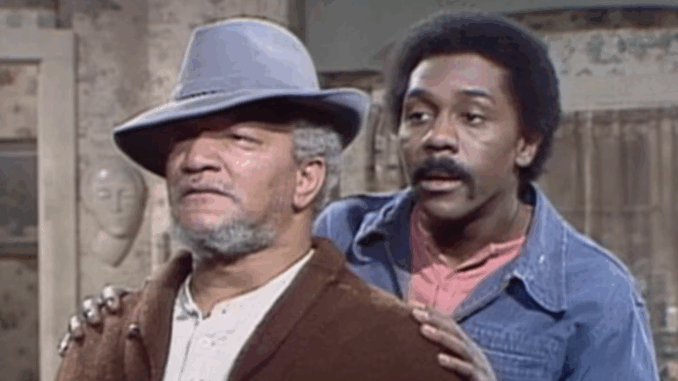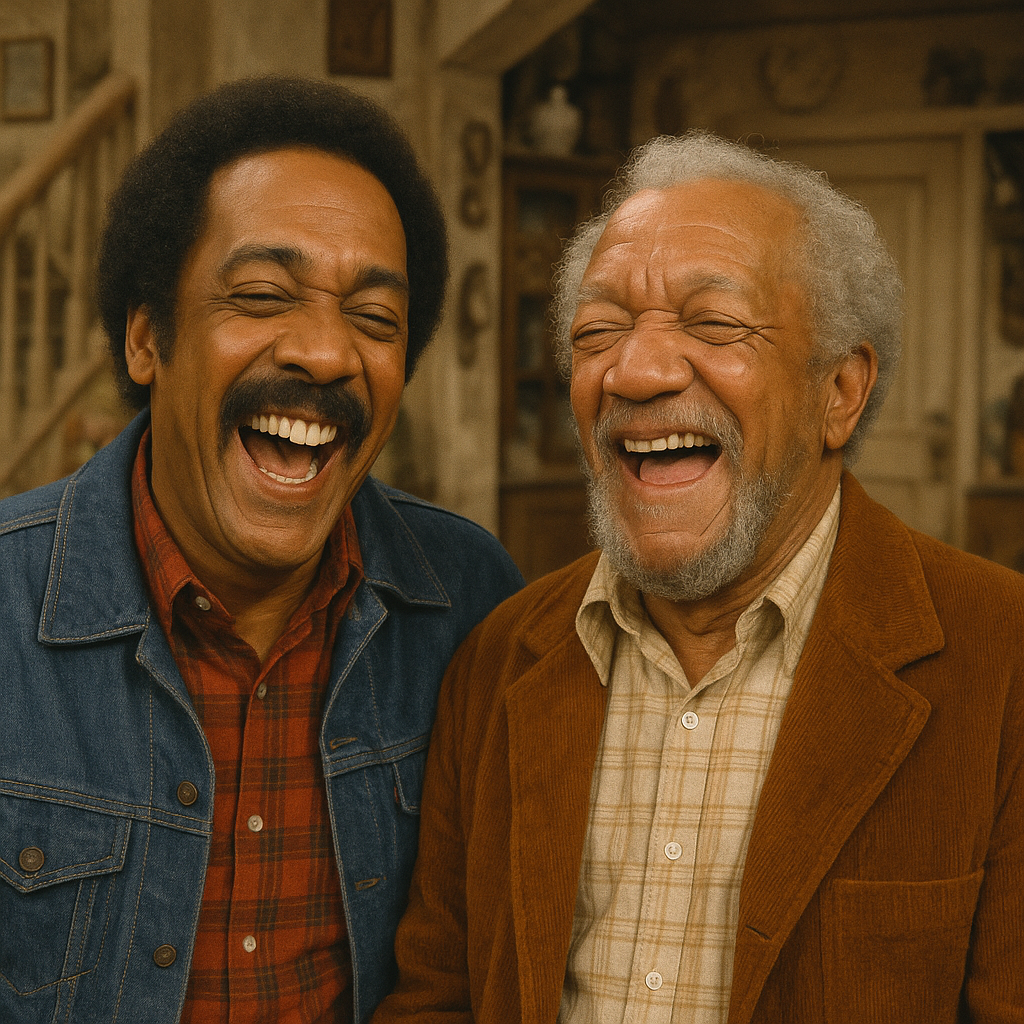
When Sanford and Son debuted in 1972, it was more than just a funny show about a junk dealer and his son. It was a pioneering sitcom that fearlessly used humor to confront pressing social issues facing America, particularly within the African American community. Through the sharp wit of Redd Foxx’s Fred Sanford and the more progressive views of Lamont, the show deftly explored themes like racism, poverty, and the healthcare system, all while keeping audiences roaring with laughter.
Laughing Through Life’s Challenges: Addressing Serious Issues with Humor
Sanford and Son, adapted by the legendary Norman Lear (who also created All in the Family), took a relatively simple premise—a widower and his adult son running a junk business in Watts, Los Angeles—and imbued it with profound social relevance.
- Racism and Prejudice: While Fred Sanford was often the one expressing various prejudices (sometimes even towards other minority groups, a reflection of the complexities of the time), the show frequently used these moments to spark dialogue. Lamont would often challenge Fred’s outdated views, creating comedic tension that also subtly highlighted the generational shift in attitudes towards race. The show didn’t shy away from depicting the realities of being Black in America, from encounters with discriminatory systems to navigating everyday biases, all seen through the lens of Fred’s cantankerous, yet often insightful, perspective.
- Poverty and Economic Struggles: The Sanfords were clearly working-class, often struggling to make ends meet. Their junk business was a constant source of both comedic mishaps and genuine financial stress. The show portrayed the daily grind of poverty not as a tragedy, but as a backdrop for resilience, resourcefulness, and the enduring bond between father and son. Fred’s elaborate (and often ill-fated) get-rich-quick schemes, born out of a desire to escape their circumstances, provided endless humor while subtly touching upon the economic challenges faced by many.
- Healthcare and Aging: Fred’s numerous (and always fake) heart attacks were a running gag, but they also humorously touched upon themes of aging, the fear of illness, and the anxieties surrounding healthcare access. While played for laughs, these moments offered a relatable glimpse into the concerns of older individuals navigating health issues, even if Fred’s approach was entirely performative.
A Trailblazer for African American Sitcoms
Sanford and Son holds a pivotal place in television history as one of the first network shows since Amos ‘n’ Andy (which ended in the 1950s) to feature a predominantly Black cast. Its massive success proved to network executives that shows centered on Black families could achieve widespread popularity and critical acclaim. This was a crucial step in diversifying the landscape of American television.
The show broke barriers not just in front of the camera, but also behind it. After initial complaints from Redd Foxx and others about the lack of diversity, Norman Lear and Bud Yorkin brought in Black writers like Richard Pryor and Paul Mooney, and pioneering Black director Stan Lathan, helping to cultivate new talent in Hollywood. This commitment to authentic voices contributed to the show’s resonance and paved the way for more nuanced portrayals of Black life on screen.
Enduring Legacy: Paving the Way for Future Generations
The impact of Sanford and Son on subsequent television series is undeniable. It opened the door for a wave of successful sitcoms centered on African American families, influencing shows that followed directly in its footsteps:
- The Jeffersons (1975-1985): Also a Norman Lear production, The Jeffersons was a spin-off of All in the Family. It followed George and Louise Jefferson, a Black couple who “moved on up” to a deluxe apartment in the sky. While Sanford and Son showed working-class life, The Jeffersons explored themes of newfound wealth, upward mobility, and navigating predominantly white spaces, but still with a feisty, opinionated Black patriarch at its core, a clear echo of Fred Sanford’s spirit.
- Good Times (1974-1979): Another Norman Lear creation, Good Times depicted the struggles of the Evans family living in a Chicago housing project. This show bravely tackled poverty, unemployment, and systemic issues with a mix of drama and humor. While it later became known for J.J.’s comedic antics, its initial seasons showcased a powerful portrayal of a Black working-class family striving for dignity, a theme foreshadowed by the Sanfords.
- Black-ish (2014-2022): In more contemporary times, shows like Black-ish continue the legacy of exploring the Black experience through comedy. While focusing on a middle-class family, Black-ish directly addresses modern issues of race, identity, and social justice with intelligence and humor, demonstrating how the foundation laid by Sanford and Son allowed for deeper, more complex conversations to evolve in the sitcom format.

Sanford and Son proved that a show with a predominantly Black cast, rooted in specific cultural experiences, could achieve mainstream success by tapping into universal themes of family, struggle, and the power of laughter. Its ability to mix sharp social commentary with genuine warmth and uproarious comedy cemented its place as a true pioneer in American television.
